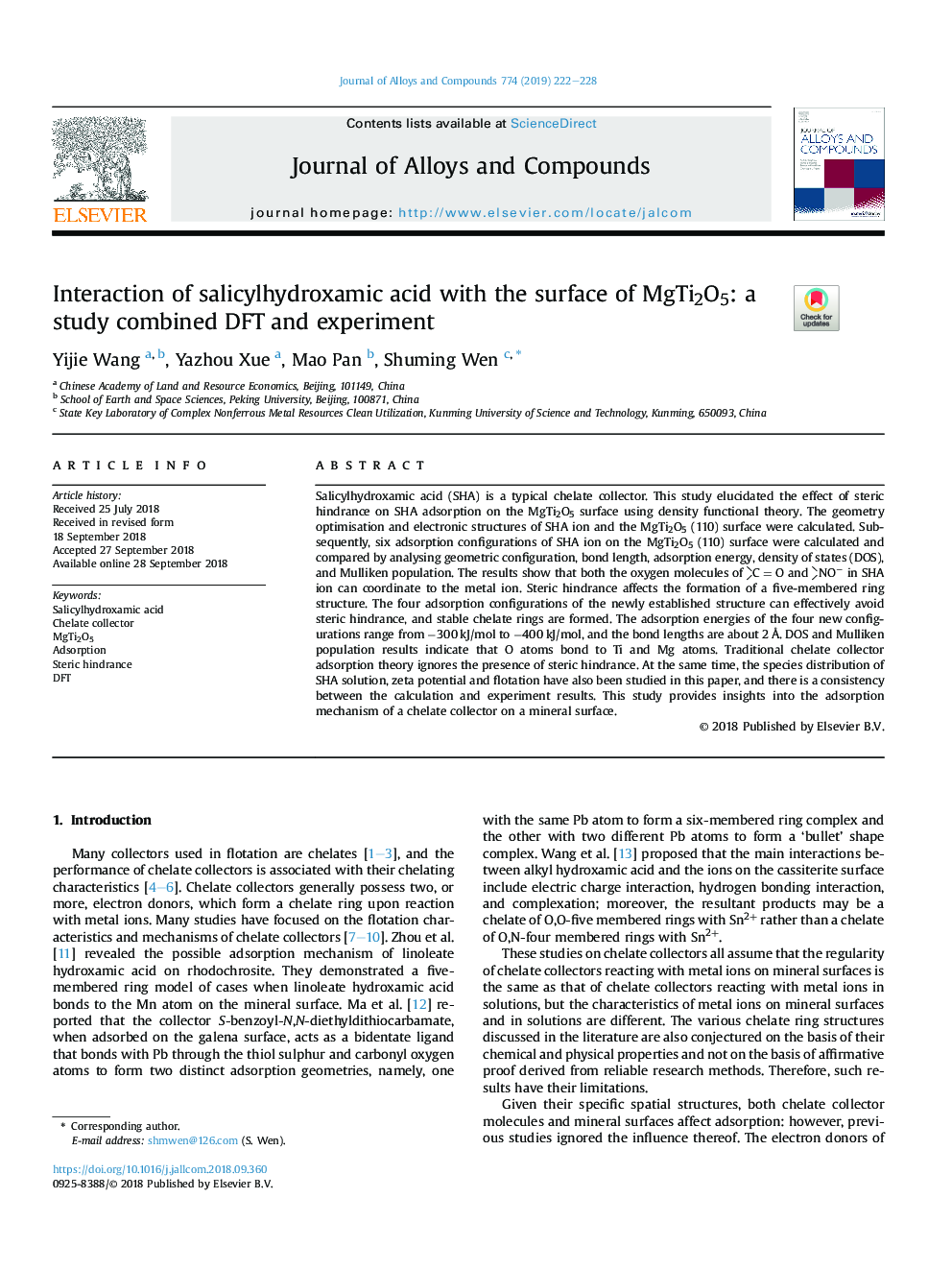| Article ID | Journal | Published Year | Pages | File Type |
|---|---|---|---|---|
| 11015775 | Journal of Alloys and Compounds | 2019 | 7 Pages |
Abstract
Salicylhydroxamic acid (SHA) is a typical chelate collector. This study elucidated the effect of steric hindrance on SHA adsorption on the MgTi2O5 surface using density functional theory. The geometry optimisation and electronic structures of SHA ion and the MgTi2O5 (110) surface were calculated. Subsequently, six adsorption configurations of SHA ion on the MgTi2O5 (110) surface were calculated and compared by analysing geometric configuration, bond length, adsorption energy, density of states (DOS), and Mulliken population. The results show that both the oxygen molecules of Câ±â²=O and Nâ±â²Oâ in SHA ion can coordinate to the metal ion. Steric hindrance affects the formation of a five-membered ring structure. The four adsorption configurations of the newly established structure can effectively avoid steric hindrance, and stable chelate rings are formed. The adsorption energies of the four new configurations range from â300â¯kJ/mol to â400â¯kJ/mol, and the bond lengths are about 2â¯Ã
. DOS and Mulliken population results indicate that O atoms bond to Ti and Mg atoms. Traditional chelate collector adsorption theory ignores the presence of steric hindrance. At the same time, the species distribution of SHA solution, zeta potential and flotation have also been studied in this paper, and there is a consistency between the calculation and experiment results. This study provides insights into the adsorption mechanism of a chelate collector on a mineral surface.
Related Topics
Physical Sciences and Engineering
Materials Science
Metals and Alloys
Authors
Yijie Wang, Yazhou Xue, Mao Pan, Shuming Wen,
